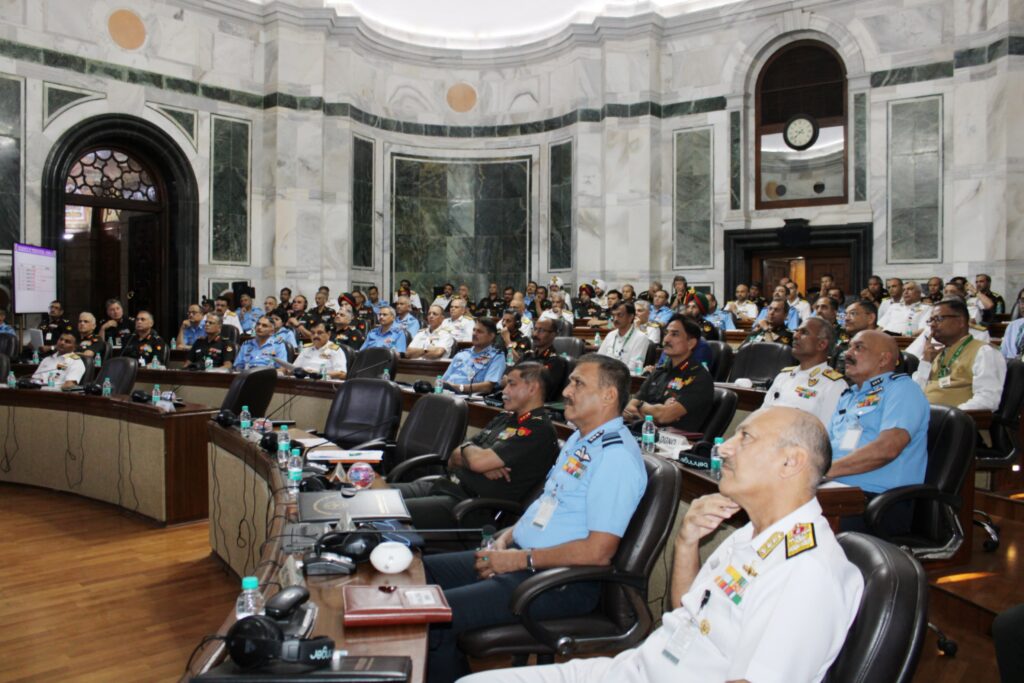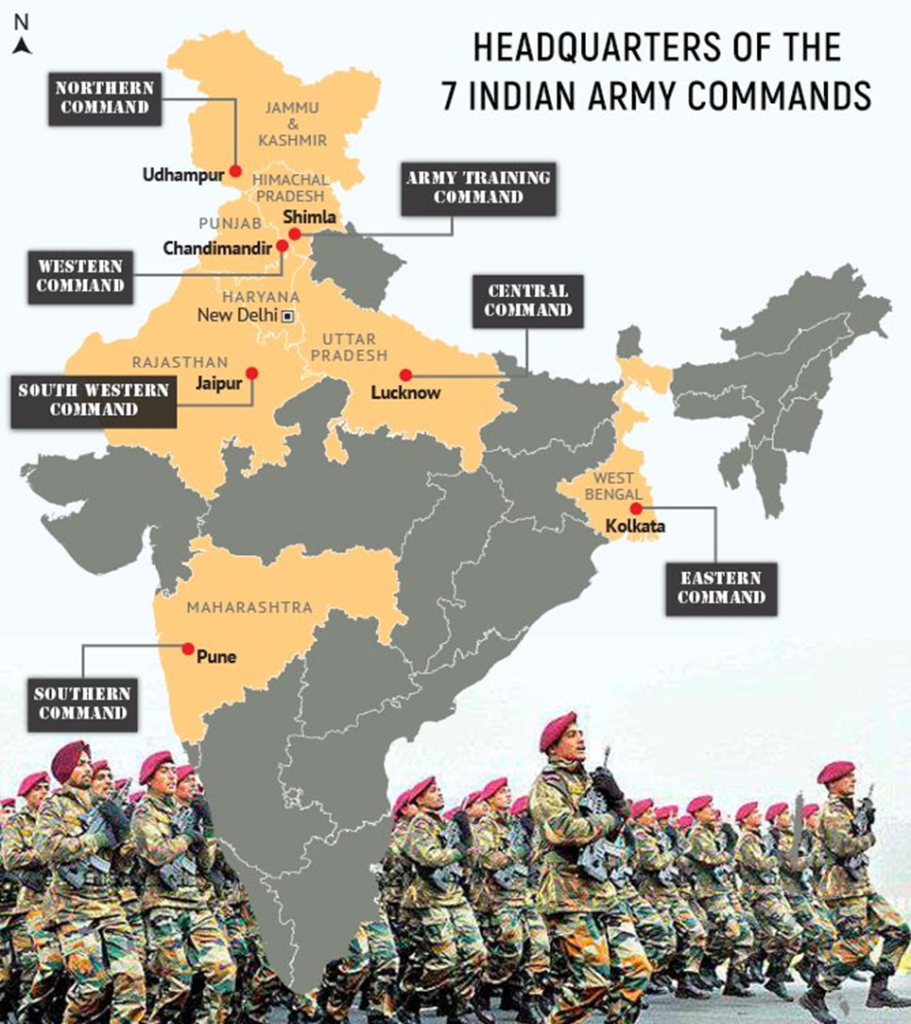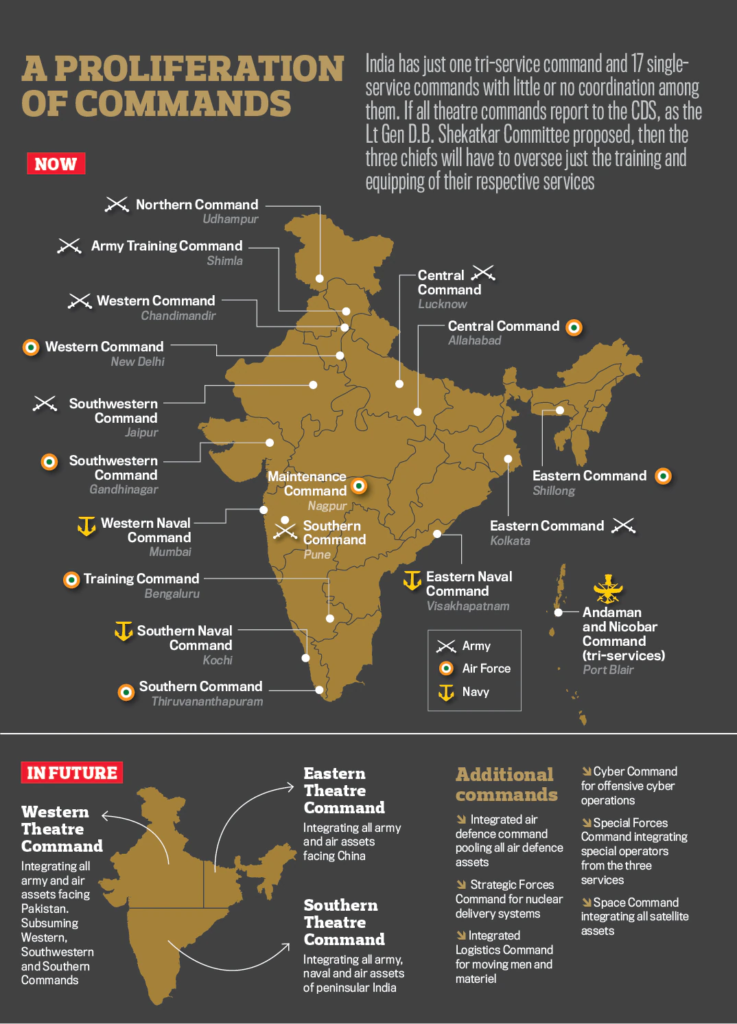By Chaitali Bag
‘Parivartan Chintan II,’ the two-day event, brought the Indian Armed Forces’ theatrisation back into the spotlight. The urgent necessity to hasten the process of “jointness” among the three branches in order to establish a multi-domain reaction mechanism has been emphasized by Chief of Defence Staff Gen. Anil Chauhan as India prepares to execute its ambitious theaterisation plan. India had begun the process of establishing theatre commands, which required integration and jointness of the various war-fighting formations, despite some early hiccups. On August 8, parliament approved the Inter-Services Organisation (Command, Control and Discipline) Bill, 2023, which is a necessary step for theatre commanders. It is now pending presidential assent.

The purpose of the bill is to make it possible for an officer in an inter-services organization—the real head of a ship, unit, or establishment—to take administrative or disciplinary action against people who are appointed, deputed, posted, or attached to the organization, regardless of their prior service. Right now, the Army Act of 1950 governs Army people, the Air Force Act of 1950 governs IAF members, and the Navy Act of 1957 governs Naval personnel. With the goal of theaterisation, the current functional commands will be replaced with theatre commands, allowing a single commander in a defined zone to have control over all the assets and resources of all three services stationed there.
Indian troops were familiar with the concept of theaterising military commands. It all started after the Kargil War, when Indian forces were dispatched to clear the ice peaks of Tiger Hills, Tololing Ridge, and other prominent landmarks overlooking Ladakh’s National Highway 1 of Pakistani soldiers and irregulars. If Pakistan had controlled the Drass stretch of National Highway 1, India would not have had access to Ladakh or the strategically vital Siachen glacier. The Kargil Review Committee, which was established in 2000, gave the notion of theatre a boost, and it was further supported by a suggestion in the 2001 Kargil report from the Group of Ministers. The current Andaman Nicobar Command was envisioned in the study as serving as a “crucible for future joint commands,” comparable to theatre commands. A joint command would thereafter replace it.
The theatrisation of the armed forces is on the agenda for the incoming administration, which will be finalized after the counting of ballots in the next elections. According to reliable sources, the Modi government has scheduled the launch of theaterisation for one year after the new government’s swearing-in next month.
In response to operational and geographical demands, India today has a total of nineteen commands, seventeen of which are single-service commands. There are a total of six operational commands in the Army, one for training, five for the IAF, one for maintenance, and three for the Navy. Additionally, there are two commands: the Strategic Forces Command and the tri-services command situated in the Andaman and Nicobar Islands. At least seven commands will be engaged in defensive and offensive operations in the event of a full-scale battle with China. Conversely, Indian forces will be engaged by just the Western theatre command of China. It is impossible to overstate the benefits of a well-cohesive and integrated force in combat.

But the new system’s hierarchy and structures are still up in the air. The sources said that this is due to the current emphasis on integration rather than theatre.
The theatre command responsible for Pakistan will have its headquarters in Jaipur, which is also home to the Army’s South Western Command (SWC). Lucknow, the present site of the Central Command, will soon be home to the second theatre command responsible for the protection of the borders with China. A thorough analysis of the theatre command organization had already been conducted by both the South West and the Central commands.

Several models are already under discussion, but the theaterisation architecture’s ultimate, definite outlines have not been established. While serving as CDS, General Rawat dropped hints about four potential commands: one to confront Pakistan in the west, one to oversee the border with China in the north, one to oversee the seas, and one to oversee the islands, which is already operational as the Andaman & Nicobar Command. A cyber command and an aerospace command were also on his radar. This was followed by a model that zeroed in on four interconnected commands: marine, air defence, eastern, and western.





